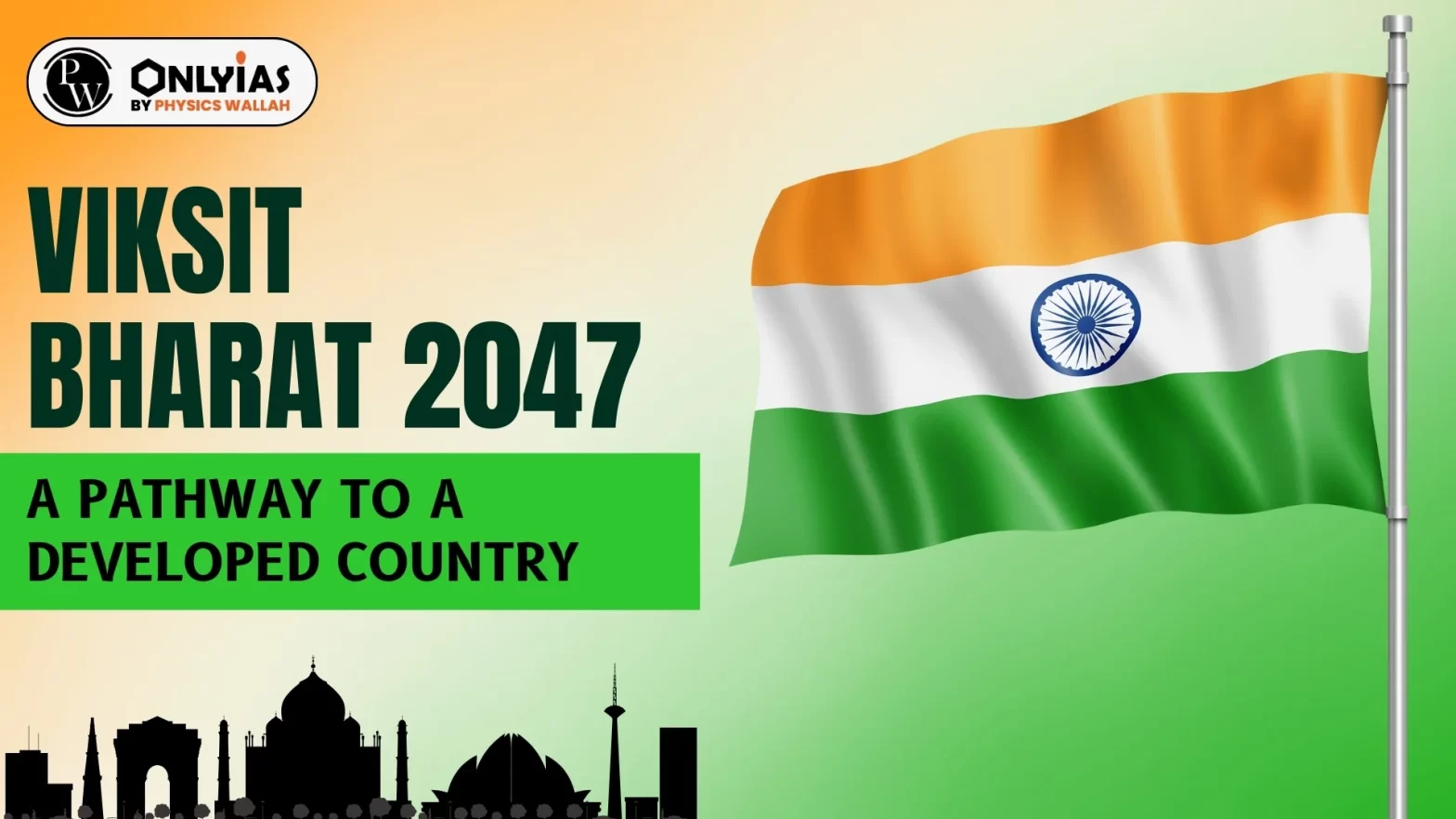Context: This article is based on an Editorial “India is poised to become ‘viksit Bharat’” which was published in the Indian Express. This article is highlighting India’s growing progress towards the aim of Viksit Bharat by 2047.
| Relevancy for Prelims: Gini Index, Purchasing Power Parity (PPP), International Monetary Fund (IMF), and World Bank.
Relevancy for Mains: India’s aim and steps to achieve the Viksit Bharat by 2047. |
Enroll now for UPSC Online Course
The World Bank Criteria of Countries Economies
- High Income Economies: These are those with an annual per capita Gross National Income (GNI) of more than $13,846.
- Upper Middle-Income Economies: These are between $4,466 and $13,845 per capita GNI.
- Lower Middle-Income Economies: These are between $1,136 and $4,465 per capita GNI..
India’s Vision Viksit Bharat @2047: Current Status
- Presently, India is a lower-middle income category.
- To become a high-income economy, it needs to cross the barrier of per capita GNI of $13,846 by 2047.
- To achieve the target, there is need to focus and work upon the three major indicators of prosperity:
- Incremental increases in overall GDP and per capita incomes over specified long periods.
- Changes in inequality of incomes in that country.
- The rate of overall inflation and exchange rate changes in the currency of that country.
Enroll now for UPSC Online Classes
Continue Reading: Viksit Bharat @2047: Voice Of Youth Workshop
A Look at Evolving Increments in India’s Prosperity
- As per the latest report of the International Monetary Fund (IMF) on India (2023): India is in a very bright spot despite gloomy global conditions.
- A Journey of a $2 trillion Economy: As per World Bank estimates, India took 67 years, from 1947 to 2014, to become a $2 trillion economy.
- A Journey of a $4 trillion Economy: It is expecting that India will add another $2 trillion to become a $4 trillion economy by 2024.
- A $10 trillion Economy: In terms of purchasing power parity (PPP), India is already a $10 trillion economy.
- Reasons of Progress:
- Continued policy shift in India since 1991 economic reforms.
- Focus on infrastructure along with providing basic facilities to people (toilets, drinking water, pucca houses and access to electricity).
- These actions helped in providing welfare as well as growth in the economy.
- In terms of Per Capita Income: India’s per capita income increased from $624 in 2004 to $1,560 in 2014, and $2,411 in 2022.
- In terms of Purchasing Power Parity (PPP): In PPP terms, GDP per capita was already at $7,112 in 2022.
- As a result, the headcount ratio of people in extreme poverty, measured at $2.15 a day (2017 PPP), has come down from 39.9 per cent in 2000 to 11.9 per cent in 2021.
- On Inflation: Recently, India’s inflation has remained largely within the RBI’s band of 4% +/-2%.
- On Exchange Rates: Presently, India has more than $600 billion in foreign exchange reserves, by which the RBI can avert any sudden depreciation of currency.
- All these factors have provided financial stability with high growth rates.
- Arising Challenge: As per many experts, the per capita income may not reflect the real prosperity of people and inequalities in the economy.
- However, as per the Gini Index that measures inequalities in income, it was reduced from 34.4 in 2004 to 34.2 in 2021 (the latest year for which data is available).
Enroll now for UPSC Online Coaching
Conclusion
To achieve the dream of Viksit Bharat by 2047, India needs to continuously work upon human development through quality education and skill formation, coupled with liberal market policies, investments and innovations. However, the only warning is that there is no Covid type disease outbreak, or a major war, natural calamity, or political upheaval.
Also Read: There is No Easy Escape From the Middle Income Trap – World Bank Chief Economist ‘Indermit Gill’
![]() 25 Dec 2023
25 Dec 2023

